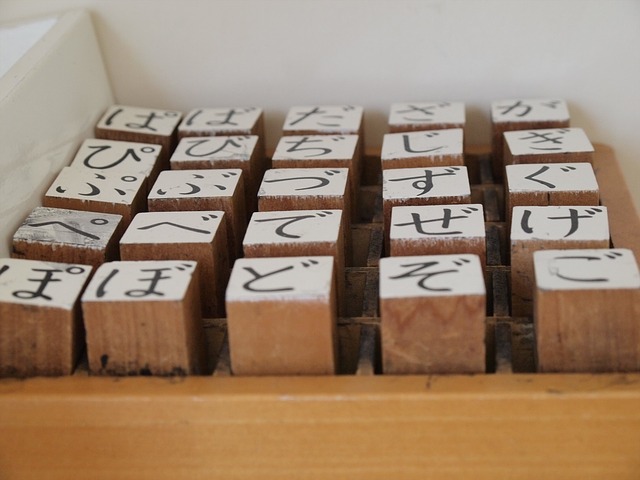
The search for the objectively hardest hiragana.
As anyone who has studied Japanese knows, the language has three different sets of characters to write with: kanji, the complex characters that come from Chinese; katakana, phonetic characters used to write foreign words; and hiragana, phonetic characters used to write Japanese words.
Anyone learning to write Japanese, including Japanese children, usually start with hiragana. But just because it’s the first, that doesn’t mean it’s super simple.
In fact, for the Arithmetic and Mathematics Free Research contest put on by the General Incorporated Foundation Research Institute of Science and Math Education last December, a project that calculated exactly how difficult it is to write each hiragana was the winner.
▼ Using math to help solve your Japanese homework!
The author of the project was seven-year-old Japanese first grader Rika Yoshida from the Utsunomiya University-Connected Elementary School in Tochigi Prefecture. Her project was selected as the winner out of 17,429 entries and was praised for its unique concept.
The way she went about measuring the difficulty of each hiragana was by assigning values to different components, then totaling them up. Each hiragana got one point for each stroke, plus another point for a “zig zag,” two points for a “curve,” and three points for a “circle.”
▼ So for example, the hiragana for “a” (winner of Cutest Hiragana) would get 8 points: 3 strokes plus 2 for a curve and 3 for a circle.
According to Yoshida’s research, the easiest hiragana were 「く」and「へ」coming in at only two points each, whereas the hardest one was「ぬ」with a whopping 10 points.
Yoshida said that her reason for performing the research was because, after starting first grade, she noticed that there were some hiragana that were easier to write then others, so she wanted to investigate why.
“By giving each hiragana a number, you can easily see which ones are easy to write and which ones are hard,” she said. As for her reaction to winning, she said, “I worked hard on it so I’m happy,” and “When I start second grade and we learn katakana and kanji, I want to try calculating them the same way.”
As adorable as the project is, it also shows a lot of advanced thinking for a first grader. If you’d asked first-grade me which letter of the alphabet was the hardest to write, I’d probably say something like “B because I don’t like broccoli.” Assigning each one a number is a pretty amazing application of logic for someone so young.
Netizens were similarly impressed and shared their own thoughts on Yoshida’s initial question:
“Great research! I thought she’d just taken a survey of her classmates or something, but taking the non-subjective route is awesome.”
“Personally I find 「む」hard to write.”
“For me it’s「あ」and「や」instead.”
“My「ふ」always look weird.”
“I can’t write a pretty「ゆ」if my life depended on it.”
It seems like we need more data on which hiragana is objectively the hardest to write. Yoshida has broken new ground, and it’s a field that is ripe for fresh research!
And I feel like this video showing each hiragana getting measured for gym class is an excellent place to start.
Source: The Sankei News via My Game News Flash
Top image: Pixabay
● Want to hear about SoraNews24’s latest articles as soon as they’re published? Follow us on Facebook and Twitter!

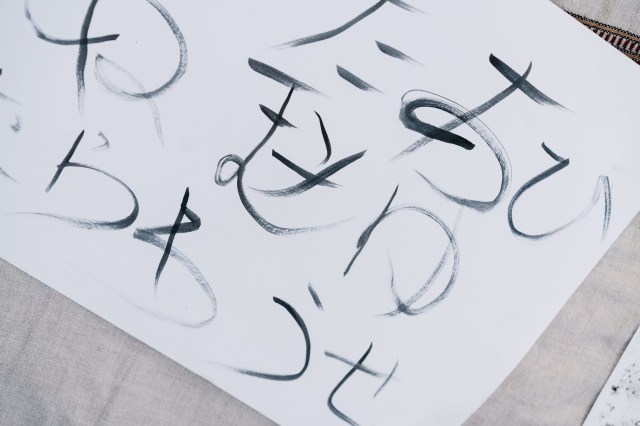
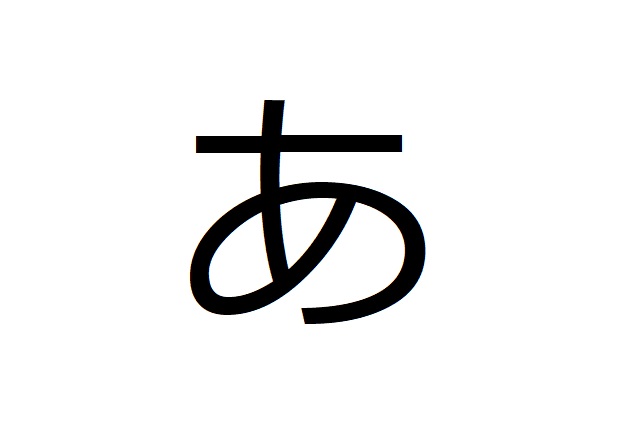
 Video of each Japanese hiragana getting “measured up” is oddly cute and satisfying【Video】
Video of each Japanese hiragana getting “measured up” is oddly cute and satisfying【Video】 Japanese writing system gets turned into handsome anime men with Hiragana Boys video game
Japanese writing system gets turned into handsome anime men with Hiragana Boys video game The awesome artwork hiding in the Japanese word processor: sakura, dragons, and sake
The awesome artwork hiding in the Japanese word processor: sakura, dragons, and sake Nintendo’s employee recruiting pamphlet is a full-color Super Mario storybook【Photos】
Nintendo’s employee recruiting pamphlet is a full-color Super Mario storybook【Photos】 Learn Japanese through ridiculous manga: A Tick on Titan 【Episode #3】
Learn Japanese through ridiculous manga: A Tick on Titan 【Episode #3】 How to order snacks on a Shinkansen bullet train in Japan
How to order snacks on a Shinkansen bullet train in Japan Burger King Japan suddenly adds Dr. Pepper and Dr. Pepper floats to its menu nationwide
Burger King Japan suddenly adds Dr. Pepper and Dr. Pepper floats to its menu nationwide New Nintendo Lego kit is a beautiful piece of moving pixel art of Mario and Yoshi【Photos】
New Nintendo Lego kit is a beautiful piece of moving pixel art of Mario and Yoshi【Photos】 Hello, cosmetics! Clinique teams up with Hello Kitty this summer for first-time collaboration
Hello, cosmetics! Clinique teams up with Hello Kitty this summer for first-time collaboration Demon Slayer: Kimetsu no Yaiba gets new roller coaster attractions and food at Universal Studios Japan
Demon Slayer: Kimetsu no Yaiba gets new roller coaster attractions and food at Universal Studios Japan 11 different ways to say “father” in Japanese
11 different ways to say “father” in Japanese Kyoto tea merchant’s matcha parfait ice cream bars: The desserts we’ve been waiting 187 years for
Kyoto tea merchant’s matcha parfait ice cream bars: The desserts we’ve been waiting 187 years for East meets West in the Pacific-centered version of the world map
East meets West in the Pacific-centered version of the world map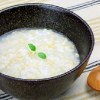 What do you eat when you catch a cold? We asked 11 of our Japanese reporters
What do you eat when you catch a cold? We asked 11 of our Japanese reporters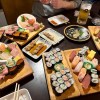 Shinjuku izakaya’s all-you-can-eat-and-drink plan is one of Tokyo’s best secret cheap eats
Shinjuku izakaya’s all-you-can-eat-and-drink plan is one of Tokyo’s best secret cheap eats Nintendo history you can feel – Super NES, N64, and GameCube controllers become capsule toys
Nintendo history you can feel – Super NES, N64, and GameCube controllers become capsule toys “The most Delicious Cup Noodle in history” – Japan’s French Cup Noodle wins our heart【Taste test】
“The most Delicious Cup Noodle in history” – Japan’s French Cup Noodle wins our heart【Taste test】 Starbucks releases a cute Frappuccino and Unicorn Cake…but not in Japan
Starbucks releases a cute Frappuccino and Unicorn Cake…but not in Japan Kyoto Tower mascot termination reveals dark side behind cute Japanese characters
Kyoto Tower mascot termination reveals dark side behind cute Japanese characters McDonald’s Japan’s Soft Twist Tower: A phantom ice cream only sold at select branches
McDonald’s Japan’s Soft Twist Tower: A phantom ice cream only sold at select branches Yabai Ramen: What makes this Japanese ramen so dangerous?
Yabai Ramen: What makes this Japanese ramen so dangerous? Finally! Nintendo Japan expands Switch 8-bit controller sales to everybody, Online member or not
Finally! Nintendo Japan expands Switch 8-bit controller sales to everybody, Online member or not Japanese government wants to build luxury resorts in all national parks for foreign tourists
Japanese government wants to build luxury resorts in all national parks for foreign tourists To combat declining birth rate, Japan to begin offering “Breeding Visas” to foreigners
To combat declining birth rate, Japan to begin offering “Breeding Visas” to foreigners 10 things you should buy at 7-Eleven in Japan
10 things you should buy at 7-Eleven in Japan Studio Ghibli releases anime heroine cosplay dresses that are super comfy to wear
Studio Ghibli releases anime heroine cosplay dresses that are super comfy to wear Woman charged for driving suitcase without a license in Osaka
Woman charged for driving suitcase without a license in Osaka Studio Ghibli unveils My Neighbour Totoro miniature house model
Studio Ghibli unveils My Neighbour Totoro miniature house model Kyoto experiencing problems with foreign tourists not paying for bus fares, but not on purpose
Kyoto experiencing problems with foreign tourists not paying for bus fares, but not on purpose Fighting mild hunger with a Japanese soda that turns into jelly in the stomach【Taste test】
Fighting mild hunger with a Japanese soda that turns into jelly in the stomach【Taste test】 Studio Ghibli’s Howl’s Moving Castle tapestry unveiled in Japan for first time
Studio Ghibli’s Howl’s Moving Castle tapestry unveiled in Japan for first time McDonald’s new Happy Meals offer up cute and practical Sanrio lifestyle goods
McDonald’s new Happy Meals offer up cute and practical Sanrio lifestyle goods Sales of Japan’s most convenient train ticket/shopping payment cards suspended indefinitely
Sales of Japan’s most convenient train ticket/shopping payment cards suspended indefinitely Sold-out Studio Ghibli desktop humidifiers are back so Totoro can help you through the dry season
Sold-out Studio Ghibli desktop humidifiers are back so Totoro can help you through the dry season Japanese government to make first change to romanization spelling rules since the 1950s
Japanese government to make first change to romanization spelling rules since the 1950s Foreigner’s request for help in Tokyo makes us sad for the state of society
Foreigner’s request for help in Tokyo makes us sad for the state of society Ghibli founders Toshio Suzuki and Hayao Miyazaki contribute to Japanese whisky Totoro label design
Ghibli founders Toshio Suzuki and Hayao Miyazaki contribute to Japanese whisky Totoro label design Doraemon found buried at sea as scene from 1993 anime becomes real life【Photos】
Doraemon found buried at sea as scene from 1993 anime becomes real life【Photos】 Tokyo’s most famous Starbucks is closed
Tokyo’s most famous Starbucks is closed Princesses, fruits, and blacksmiths: Study reveals the 30 most unusual family names in Japan
Princesses, fruits, and blacksmiths: Study reveals the 30 most unusual family names in Japan Learn Japanese through ridiculous manga: Death Vote 【Episode #6】
Learn Japanese through ridiculous manga: Death Vote 【Episode #6】 The surprising reasons why some hiragana aren’t allowed to be used on Japanese license plates
The surprising reasons why some hiragana aren’t allowed to be used on Japanese license plates You can send email from payphones in Japan?!? We try the technology trick that shocked the nation
You can send email from payphones in Japan?!? We try the technology trick that shocked the nation World’s first moaning hiragana character either a stroke of genius or just plain weird【Video】
World’s first moaning hiragana character either a stroke of genius or just plain weird【Video】 Struggling with Japanese? Let Tako lend you a hand…or five
Struggling with Japanese? Let Tako lend you a hand…or five Uncle and netizens confused about child’s low grade on math assignment
Uncle and netizens confused about child’s low grade on math assignment Giant misspelling in rice field art warms Japan’s heart, so farmers decide to roll with it【Video】
Giant misspelling in rice field art warms Japan’s heart, so farmers decide to roll with it【Video】 Learn Japanese through ridiculous manga: Narutoe 【Episode #2】
Learn Japanese through ridiculous manga: Narutoe 【Episode #2】 “We wasted so much time in English class” — Japanese Twitter user points out major teaching flaw
“We wasted so much time in English class” — Japanese Twitter user points out major teaching flaw Foreigners in Japan vote for the best-looking katakana character
Foreigners in Japan vote for the best-looking katakana character U.S.-made live-action Hello Kitty movie on the way, directors announced
U.S.-made live-action Hello Kitty movie on the way, directors announced Watch this renowned Japanese calligrapher effortlessly write “the hardest kanji ever”【Video】
Watch this renowned Japanese calligrapher effortlessly write “the hardest kanji ever”【Video】 Shikoku Island holds world landmark lookalike photography contest judged by AI
Shikoku Island holds world landmark lookalike photography contest judged by AI
Leave a Reply